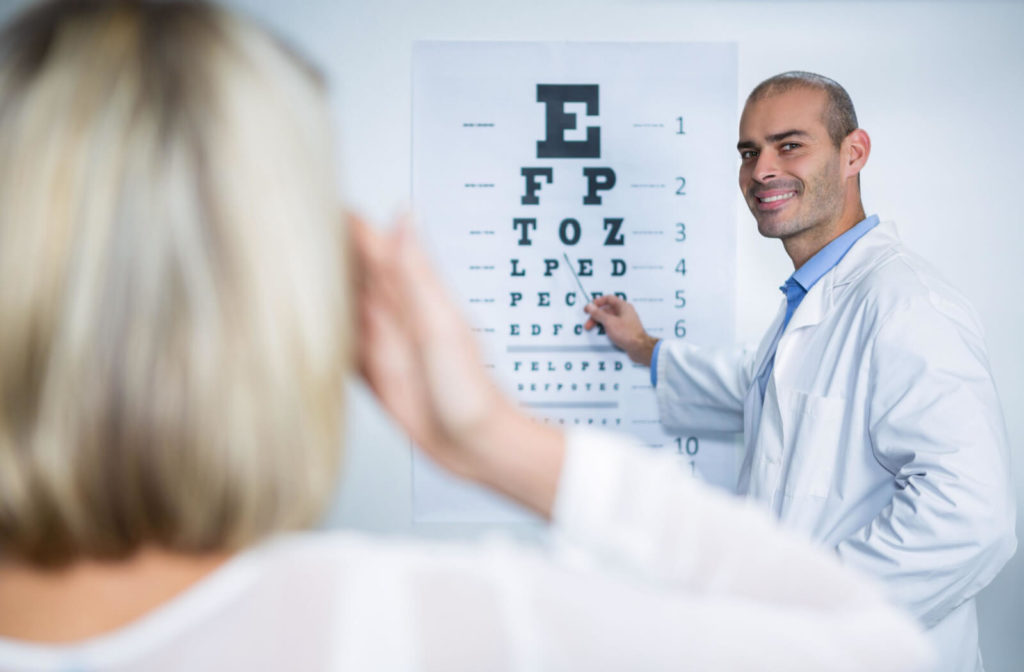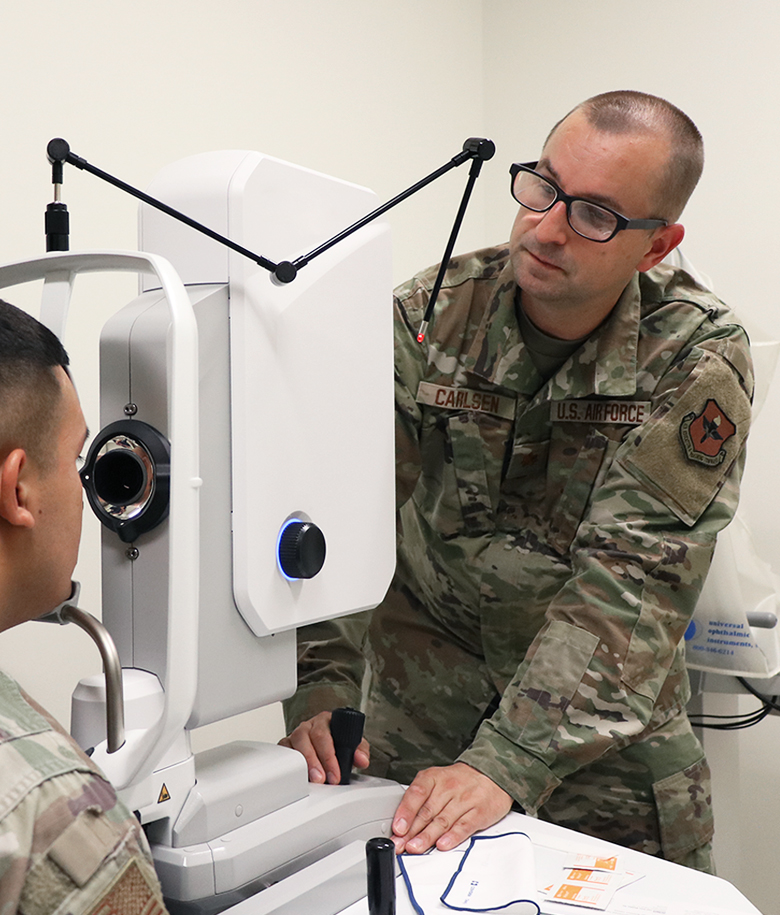Discover the very best Optometrist Chino for Comprehensive Eye Care
Discover the very best Optometrist Chino for Comprehensive Eye Care
Blog Article
Exploring the most recent Technical Advancements in Optometry and What They Mean for Eye Doctors
In the ever-evolving field of optometry, current technological improvements are reshaping just how experts come close to eye care. From the precision of Optical Coherence Tomography to the nuanced understandings used by AI-driven analysis tools, these developments are establishing brand-new requirements in client analysis and treatment. Teleoptometry is positioned to redefine ease of access, making sure that know-how transcends geographical limitations. As these advancements penetrate the technique, optometrists are faced with the obstacle of embracing these tools to boost client end results. The inquiry stays: just how will these technical changes redefine the roles and duties within the profession?
Technologies in Diagnostic Devices
Progressing the area of optometry, technologies in analysis tools have changed the method eye treatment experts analyze and diagnose aesthetic disabilities and ocular problems. The previous years has actually witnessed substantial technological advancements, making it possible for even more detailed and accurate analyses.
Another trick advancement is the introduction of innovative corneal topography systems, which map the surface area curvature of the cornea with precision. These tools are especially helpful for fitting contact lenses and identifying corneal conditions. Digital retinal imaging has actually changed traditional ophthalmoscopy, supplying detailed, scenic views of the retina that help with complete visual evaluations.
The development of wavefront aberrometry has also been important, enabling the evaluation of refractive errors with unparalleled accuracy (Opticore Optometry). This technology assists in customizing corrective lenses and boosting medical results for refractive surgical procedures. Jointly, these analysis advancements encourage optometrists to supply exceptional patient treatment, guaranteeing early treatment and tailored therapy techniques, inevitably boosting visual health and wellness end results
AI in Person Monitoring
Building on the foundation of innovative diagnostic tools, the consolidation of synthetic intelligence (AI) in individual monitoring represents a transformative jump for optometry. AI systems are significantly used to enhance performance, accuracy, and personalization in client treatment. By assessing substantial quantities of data, AI can identify patterns and predict possible ocular conditions, enabling optometrists to customize treatments a lot more efficiently. This capacity is critical in handling chronic eye illness such as glaucoma and diabetic person retinopathy, where early detection and continuous tracking are essential.
Additionally, AI-driven platforms facilitate structured patient interactions and management processes. Automated scheduling, online consultations, and personalized follow-up strategies not just boost client complete satisfaction yet likewise optimize time management for experts. These systems can triage patients based on the seriousness of their conditions, guaranteeing that those in important requirement get timely attention.
Additionally, AI enhances decision-making by giving optometrists with evidence-based recommendations and treatment pathways. By incorporating data from digital health records, AI devices supply understandings that inform professional decisions, decreasing the danger of errors and enhancing client outcomes. As AI remains to evolve, its function in individual management will likely expand, reshaping the landscape of optometric treatment.
Advances in Retinal Imaging
In the world of optometry, retinal imaging has actually witnessed amazing technological developments that are boosting diagnostic capacities and patient treatment. Advancements such as Optical Coherence Tomography (OCT) and fundus digital photography have actually reinvented just how optometrists imagine and assess the retina. OCT, in certain, offers high-resolution, cross-sectional photos Full Report of the retina, enabling the comprehensive examination of its layers. This ability is invaluable for very early discovery and monitoring of problems like glaucoma, diabetic person retinopathy, and age-related macular degeneration.
Enhanced imaging techniques like OCT angiography are additional refining diagnostic accuracy. Eye Doctor Optometrist. Such advancements help with the identification of minute retinal changes that can symbolize condition development.
In addition, advancements in synthetic knowledge are enhancing retinal imaging by making it possible for automated evaluation of huge datasets. These systems help optometrists in determining patterns indicative of pathology, therefore improving diagnostic precision and efficiency. Collectively, these technologies are changing retinal imaging right into a keystone of modern eye treatment, improving outcomes and expanding therapeutic opportunities.
Teleoptometry's Expanding Duty
Teleoptometry is increasingly ending up being a crucial element of eye care, driven by developments in electronic interaction and diagnostic devices. As optometry embraces digital transformation, teleoptometry helps with remote appointments, permitting optometrists to expand their solutions past conventional borders. This is especially useful in underserved and rural areas where accessibility to specialized eye care is commonly limited. By leveraging high-resolution video conferencing and progressed retinal imaging, eye doctors can carry out comprehensive eye examinations from afar, making sure timely medical diagnosis and treatment.
The integration of expert system (AI) further improves teleoptometry, allowing the analysis of aesthetic information and helping in the detection of ocular problems such as glaucoma and diabetic person retinopathy. AI-powered formulas can quickly translate intricate imaging information, providing eye doctors with beneficial insights that reinforce professional decision-making.
Additionally, teleoptometry sustains continuity of treatment via seamless combination with electronic health and wellness documents (EHRs), allowing eye doctors to preserve comprehensive patient histories. This guarantees that patients receive regular and tailored treatment even when talking to various specialists.
Regardless of these benefits, difficulties continue to be, including making certain data protection and managing individual assumptions. However, teleoptometry stands for a substantial stride in the direction of more easily accessible, reliable, and patient-centered eye treatment. As technology evolves, its role is poised to increase further.

Future Patterns in Eye Care
A myriad of ingenious patterns is set to reshape the future of eye care, driven by technical advancements and the progressing needs of people. One substantial fad is the assimilation of synthetic intelligence (AI) in diagnostics, which assures visit here to improve the accuracy and effectiveness of eye assessments. AI algorithms can assess huge amounts of information from retinal images, possibly identifying conditions like diabetic retinopathy and glaucoma earlier than standard techniques.
Furthermore, tailored medication is getting grip in optometry, with hereditary testing educating about his customized therapy plans. This approach intends to maximize client results by customizing treatments to specific hereditary profiles. Wearable technology, such as wise call lenses, is likewise on the perspective, supplying real-time monitoring of intraocular stress or glucose degrees, thus providing continuous insights into ocular and systemic wellness.
The fostering of increased truth (AR) and online fact (VR) in training and person education and learning is one more arising trend. These innovations use immersive experiences that can improve understanding and abilities both for people and optometrists. As these trends progress, eye doctors should remain abreast of technical advancements to offer advanced treatment, making sure improved client results and complete satisfaction in the dynamic landscape of eye care.
Final Thought

Collectively, these diagnostic developments empower eye doctors to supply exceptional individual treatment, making certain very early treatment and customized treatment techniques, inevitably enhancing visual wellness end results.

As these technologies proceed to develop, optometrists need to adapt and incorporate them into technique, inevitably optimizing workflow performance and raising the standard of eye care delivered to patients.
Report this page